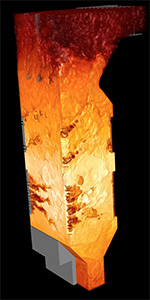
University of Utah engineers will use a five-year, $16 million grant to conduct supercomputer simulations aimed at developing a prototype low-cost, low-emissions coal power plant that could electrify a mid-sized city. The goal of this “predictive science” effort is to help power poor nations while reducing greenhouse emissions in developed ones.
The grant by the U.S. Department of Energy’s National Nuclear Security Administration is enabling University of Utah researchers Philip J. Smith and Martin Berzins, along with university President David W. Pershing, to establish the Carbon Capture Multidisciplinary Simulation Center. All three are professors in the university’s College of Engineering.
The researchers will use supercomputers to simulate and predict performance for a proposed 350-megawatt boiler system that burns pulverized coal with pure oxygen rather than air. The design – which never has been built – captures carbon dioxide released during power generation.
Read more in the U News Center